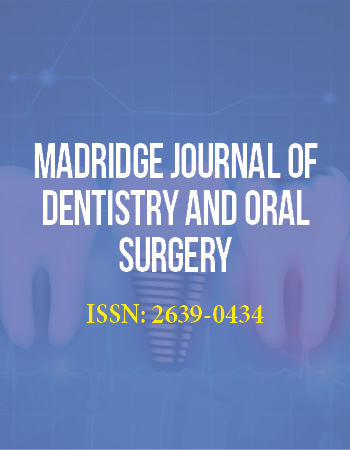International Conference on Dentistry
April 3-5, 2017 Dubai, UAE
Ameloblastoma RNA profiling uncovers a distinct non-coding RNA signature
1Department of Dental Medicine, Karolinska Institutet, Sweden
2Department of Laboratory Medicine, Karolinska Institutet, Sweden
3Rudbecklaboratory, Uppsala University, Sweden
4Department of Biosciences and Nutrition, Bioinformatics and Expression Analysis Sci Life Lab, Karolinska Institutet, Sweden
5Department of Oncology and Pathology, Karolinska Institutet, Sweden
6Radiumhemmet, Karolinska University Hospital, Sweden
7The Clinic of Oral and Maxillofacial Surgery, Karolinska University Hospital, Sweden
Ameloblastoma of the jaws remains the top difficult to treat odontogenic tumour and has a high recurrence rate. New evidence suggests that non-coding RNAs (ncRNAs) play a critical role in tumourgenesis and prognosis of cancer. However, ameloblastoma ncRNA expression data is lacking. Here we present the first report of ameloblastoma ncRNA signatures. A total of 95 ameloblastoma cases and a global array transcriptome technology covering >285.000 full-length transcripts were used in this two-step analysis. The analysis first identified in a test cohort 31 upregulated ameloblastoma-associated ncRNAs accompanied by signalling pathways of cancer, spliceosome, mRNA surveillance and Wnt. Further validation in an independent cohort points out the long non-coding (lncRNAs) and small nucleolar RNA (snoRNAs): LINC340, SNORD116-25, SNORA11, SNORA21, and SNORA65 as a distinct ncRNA signature of ameloblastoma. Importantly, the presence of these ncRNAs was independent of BRAF-V600E and SMOL412F mutations, histology type or tumour location, but was positively correlated with the tumour size. Taken together, this study shows a systematic investigation of ncRNA expression of ameloblastoma, and illuminates new diagnostic and therapeutic targets for this invasive odontogenic tumour.
Biography:
Haleh Davanian completed undergraduate studies and major was Biomedicine. She continued with research in the field of Odontology, with major in Periodontitis. In early 2015 I received my PhD in Medicine, with the title Gene expression profile in Periodontitis. Today She work 50% as a postdoctoral researcher and 50% as a lecturer at the Department of Dental Medicine, Karolinska Institutet in Stockholm Sweden. The research topics She work with today is mainly in the field of cancer biology, microbiology as well as immunology are related to oral diseases.


